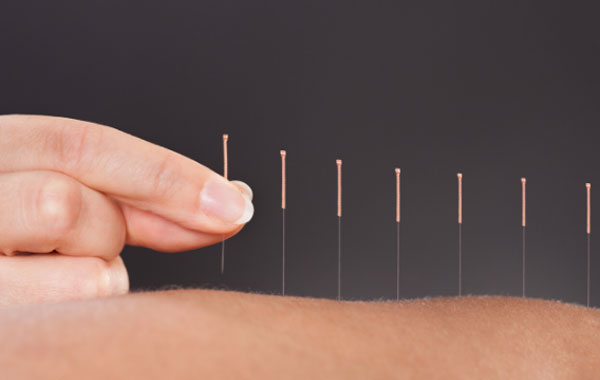Acupuncture is a critical component of traditional Chinese medicine. It involves the insertion of thin needles into pressure points in the body. This treatment method is excellent for treating pain, relieving stress, and improving overall wellness.
Traditional Chinese medicine uses acupuncture to balance the body’s energy flow or life force (chi or qi). This life force is believed to flow through the body pathways (meridians). Inserting the acupuncture needles in specific points along the meridian rebalances the energy flow.
On the other hand, western medicine uses acupuncture to stimulate the nerves, connective tissues, and muscles. Inserting acupuncture needles stimulates the body to boost the production of natural painkillers.
Besides relieving pain and treating several conditions, acupuncture has other benefits. Read on to find out the benefits of acupuncture and the conditions it treats.
How Does Acupuncture Work?
Acupuncture requires needles to stimulate the sensory nerves in the muscle and under the skin. Consequently, the body releases endorphins which are natural substances that relieve pain. During the treatment, your physiotherapist will insert hair-thin needles into pressure points on your skin throughout your body.
The needles then stimulate your body to rebalance the body and release natural chemicals like endorphins and neurotransmitters. Endorphins are the body’s natural painkillers, while neurotransmitters are chemicals that control nerve impulses.
During the treatment, you may feel a tiny prick with the insertion of each needle. This prick is not as painful as when you get a blood draw or a vaccine. You may also feel muscle sensations like tingling or a dull ache. Usually, these sensations mean the treatment is working. Nevertheless, if you feel numbness or heaviness, ensure you inform your physiotherapist.
Click here – Is physical therapy worth it for back pain?
What Does Acupuncture Treat?
Dynamic physiotherapy often uses acupuncture as a complementary treatment in a physiotherapy program. This treatment digestive, musculoskeletal, respiratory, and eye-ear-throat issues. Some of the issues acupuncture assists in treating include;
- Lower back pain
- Osteoarthritis
- Knee pain
- Migraines
- Headache
- Nausea
- Fatigue
- Rheumatoid arthritis
- Constipation
- Neck pain
- Menstrual cramps
- Fibromyalgia
What are the Benefits of Acupuncture?
Acupuncture offers numerous benefits, including the following;
Reduced Stress
Stress causes pressure buildup in the body. Work, job demands, and daily personal pressures contribute to stress accumulation in the body. Fortunately, acupuncture relieves pressure points and lowers stress hormones in the body. This treatment also improves mood and stimulates feelings of happiness.
Reduced Pain
Poor posture, desk work, and heavy backpacks can cause pain in the back, neck, shoulder, and arms. Acupuncture can be used to target and relieve pain in these areas. The needles penetrate these areas to reduce swelling and inflammation.
Improved Immune System
Acupuncture stimulates the body’s immune response, strengthening the immune function. This treatment also increases white blood cell counts to fight sickness, hasten recovery, and reduce downtime.
Furthermore, acupuncture relieves allergy symptoms like runny nose, fatigue, congestion, and headaches because it improves the immune system.
Mental Clarity
An acupuncture treatment can improve sleep quality and increase energy to improve mental clarity. The therapy also induces a state of calm, improving your attention and ability to recall.
Click here – OH MY PRETTY: Complete Guidance About The Glueless Lace Front Wigs
What Happens During an Acupuncture Procedure?
Before inserting needles in your body, your acupuncturist will examine your body to feel the strength and quality of your pulse and the parts of your body where you feel pain. Your physiotherapist in Okotoks will also ask about your symptoms and lifestyle.
After ascertaining where you need treatment, your physiotherapist will let you know if you must remove any clothing. You will also receive a gown, towel, or sheet. Afterward, you will lie on a padded table, and your physiotherapist will commence treatment.
The first step of the treatment is needle insertion. During this stage, your acupuncturist will insert acupuncture needles into strategic points on your body at various depths. Because the needles are very thin, you will only experience slight discomfort. However, you may feel a mild ache when the needle reaches the correct depth. The treatment usually involves the use of 5 to 20 needles.
After inserting the needles, your acupuncturist may manipulate the needle by twirling them or applying heat or mild electrical pulses to stimulate the body.
The duration of an acupuncture session depends on your condition, general health, and medical history. Nevertheless, a typical session takes between 10 and 20 minutes. At the end of your session, your physiotherapist will remove the needles. You should not experience any discomfort when the needles are removed.
Is Acupuncture Suitable for Everyone?
Not everyone qualifies for acupuncture. For instance, pregnant women and people with bleeding disorders are unsuitable for acupuncture. This is because some acupuncture points can stimulate labor and result in premature delivery.
In addition, having a bleeding disorder increases the susceptibility to bleeding and bruising during an acupuncture treatment.
Acupuncture in Okotoks, AB
Although acupuncture offers numerous benefits, there are associated risks, including soreness and bleeding or bruising at the insertion site. Choosing a certified acupuncture practitioner is essential in reducing these risks. Okotoks acupuncture uses sterile, single-use needles to reduce infection risk and improve overall well-being.

